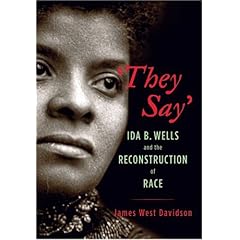Jena Is More than Jena and a Noose Is More than a Nuisance
 There’s no need any longer to make Jena, Louisiana our whipping boy. Over the past few weeks the New York Times, the Washington Post and other papers have catalogued a string of incidents in which nooses were displayed in New York City, Long Island, College Park, Pittsburgh, Atlanta, Macon, Greensboro, and San Antonio.
There’s no need any longer to make Jena, Louisiana our whipping boy. Over the past few weeks the New York Times, the Washington Post and other papers have catalogued a string of incidents in which nooses were displayed in New York City, Long Island, College Park, Pittsburgh, Atlanta, Macon, Greensboro, and San Antonio.
The nooses were hung on flagpoles, strung up in a police locker room, placed on a Coast Guard ship, dangled from the stage of a Memphis theater, looped over the door of a professor’s office, and displayed with the blackened face of a stuffed animal stuck through.
Meanwhile some folks in Jena were looking to put the troubles there in a more hopeful light. “If you compare us today to fifty years ago,” pointed out one school board member, “we have come a long way.”
No doubt the nation has come even further from the nadir of race relations in the 1890s, when the redoubtable Ida B. Wells of Memphis began her campaign against lynching. Born a slave around the time of the Emancipation Proclamation, Wells was a schoolteacher before launching her campaign against white violence. During those years, not just noose hangings but lynchings were being reported once or twice a week.
If she were alive today, Wells (or Wells-Barnett as she was known, after marrying in 1895) would surely grant the progress made. But the lynching in 1892 that led her to become an activist bears more than a little similarity to the incident at Jena. Not in the level of violence, but in the way events unfolded and the way the nation reacted to them.
Jena began with a schoolyard quarrel: black students asking if they could sit under a tree where whites congregated; two nooses hung in evident retaliation; several brawls the following week. In Memphis in 1892, the spark was a fight over a game of marbles at “the Bend,” a section on the city outskirts. A black boy bested a white boy in a scuffle; the white boy’s father thrashed the black boy; black parents gathered to protest.
The violence soon escalated. Plainclothes police raided a nearby black-owned grocery, sent there by the white owner of a rival grocery. When the black proprietors opened fire on what they believed was a lawless mob, they and other bystanders were arrested. Four nights later a real mob snatched the storeowners from jail and riddled them with bullets.
At the time Wells had already left teaching to become a journalist protesting the deteriorating state of race relations. “Separate car” laws were being enacted for intercity railroads, as a full-blown policy of segregation spread across the South. Twice Wells was ejected from the first-class “ladies car,” and twice she successfully sued the railroads for damages. (The Tennessee supreme court eventually ruled against her on appeal.)
Wells was out of town when the Memphis lynching occurred. Her absence, though, may have helped open her eyes to the underlying dynamics of lynching. Being away, she had to glean her information from white newspaper accounts, which spoke breathlessly about a “nest of turbulent and unruly negroes” who provoked the police.
But in this case Wells knew the accused personally. Thomas Moss was a close friend, a gentle and decent man. One of the supposedly “unruly” storeowners, he was found lying in a pool of blood, still carrying the pamphlets he used to teach Sunday school.
The massive distortions in the newspapers led Wells to realize that the other accounts of black crimes and white mobs were murky at best and utterly unreliable at worst. In the future, when news of a lynching broke, her first move was to travel to the scene to obtain direct information.
With Jena, the national press has shown only modest interest in imitating Wells. Most stories have relied on local accounts, concentrating on whether residents believed media coverage to be “fair.” The Jena Times, swamped by an “overwhelming number of requests from outside media,” assembled a chronology that firmly stated, among other things, that “there was no racial motivation behind the nooses and that the incident was a prank.” According to a child welfare supervisor who interviewed the perpetrators, “They honestly had no knowledge of the history concerning nooses and black citizens. This may seem hard to believe for some people, but this is exactly what everyone on the committee determined.”
Wells would have snorted in disbelief. If the nooses were not meant to intimidate, what was the point of this innocent “prank”? Why a noose and not, let us say, jockey shorts hung from the tree? What were the boys thinking and what was their motivation? On this the Jena Times remained mum. And even if the boys had “no knowledge of the history” of lynching, what does this say about the state of social studies courses being taught?
But we need not—should not—focus on Jena alone. The latest rash of noose sightings makes clear that intimidation remains at the heart of the act. Stay in your place. Keep away from white jobs.
At the construction site near Pittsburgh where one noose turned up, the white boss dismissed its placement as “just a joke.” Another “prank,” like Jena.
Wells understood differently. Lynching “is a national crime and requires a national remedy,” she insisted in her day. We should be exploring why, despite the demise of lynching, nooses and intimidation remain a clear threat to the wellbeing our nation. The press should lead the way.